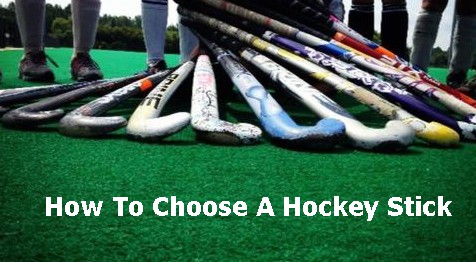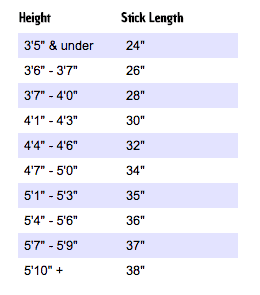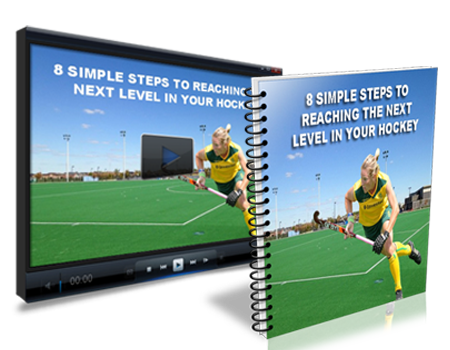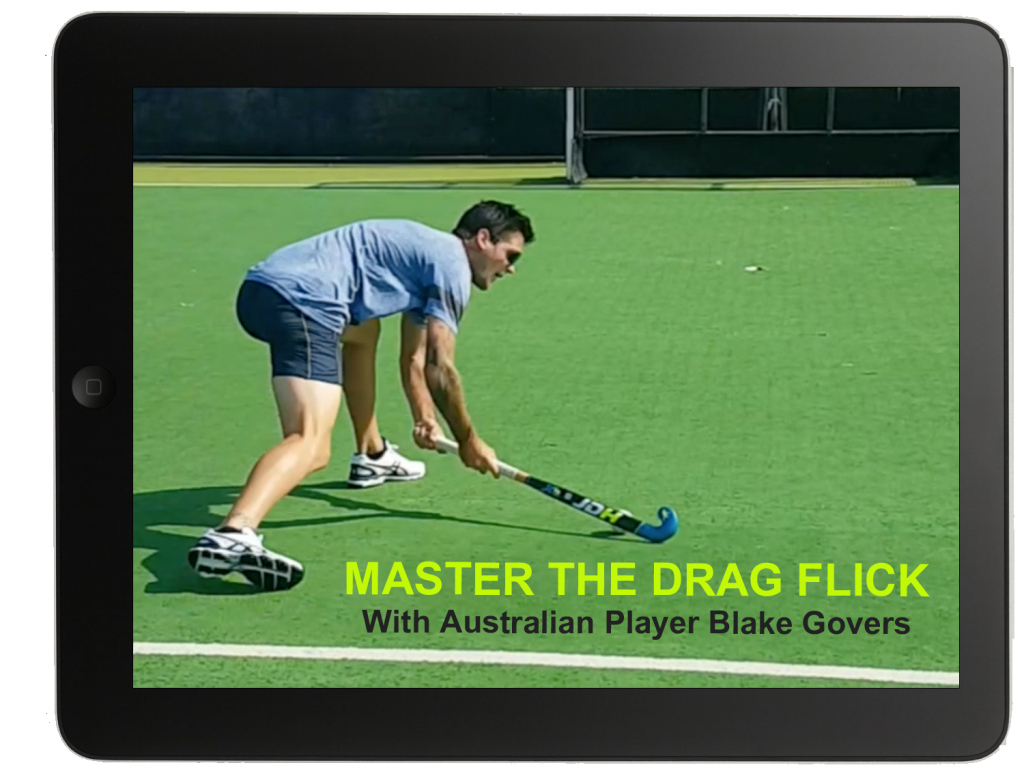With so many different types of hockey sticks available today, choosing a field hockey stick can be a daunting task, especially when you have no idea what you are looking for.
That’s why I put together a complete guide of how to choose a field hockey stick.
There are various factors to consider when selecting a stick which I outline in more detail below.
Length
Having a stick that is the correct size will help you to better execute your skills.
Ideally your stick should come up to the top of your hipbone, but depends on personal preference. Stick lengths typically range from 24”-38”
A slightly longer stick will improve your reach while a shorter stick will improve stick handling skills.
Weight
Field hockey sticks range from about 535g to about 680g in weight. This typically depends on personal preference. For example:
Lighter weight sticks are typically designed for attacking players which allow for a quicker backswing and stick skills.
Heavier weight sticks are typically designed for defensive players and can help to add power and distance in your hits which is ideal for clearing balls and passing.
Composition
Carbon: Adds stiffness to the stick. The higher the carbon percentage the more powerful your hits will be. A stick with less carbon will improve control and make trapping easier. Sticks with higher levels of carbon tend to be more expensive.
Aramid: Adds durability to the stick and absorbs vibrations sent through the stick when striking and receiving balls.
Fibreglass: Many field hockey sticks still contain some level of fibreglass. It adds strength, durability and feel to a stick. These are less rigid than carbon-heavy sticks making them more forgiving. Fibreglass is similar to carbon but more economical.
Wood: Some players still prefer to use wooden sticks. Wooden sticks improve control when dribbling and receiving. More affordable and ideal for young beginners.
It is suggested that beginners start with lower levels of carbon and work their way up as they progress.
Bow
The bow of a stick is the slight bend that you can see from the handle to the toe. This typically ranges from 20mm-25mm which is the maximum. Bow choice will depend on preference, age and skill level.
The more bend the stick has the easier it will be to use lifted shots, aerials and dragflicks. Having less bend will improve control and you are less likely to accidentally lift the ball.
The three main types of bow are:
Regular / standard bow (20mm): The highest point of the bow falls in the middle part of the stick, which is ideal for every aspect of the game from ball control to advanced maneuvers.
Mega bow (24.75mm): The middle of the bend is closer to the toe of the stick and provides extra power when lifting the ball and also dragflicking. This is ideal for more advanced players.
Low bow (25mm): This bend is closest to the head of the stick and helps with controlling and lifting the ball, aerials and dragflicking. Ideal for elite level players.
Toe shape
The toe of the stick is the level of curve and can affect how players strike the ball and handle the stick. Smaller toes provide more agility but limit power while larger toes provide a larger surface area to strike and receive the ball but reduce movement.
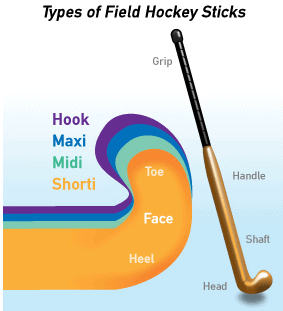
Midi: Most used toe shape for beginners. Improve technique and offers close control. Great sweet spot when hitting. Ideal for midfielders or players that like to move the ball quickly when dribbling.
Maxi: Larger surface area and hitting power. Great for dragflicks, injectors and reverse stick control. This toe shape is ideal for defensive players.
Hook: J shaped toe which provides the largest surface area for increased ball control, better dragflicks and using reverse skills. Ideal for players with an upright style and is good on grass surfaces.
Which Brand?
I’m often asked what brand is best to get and to be honest it really is a personal preference.
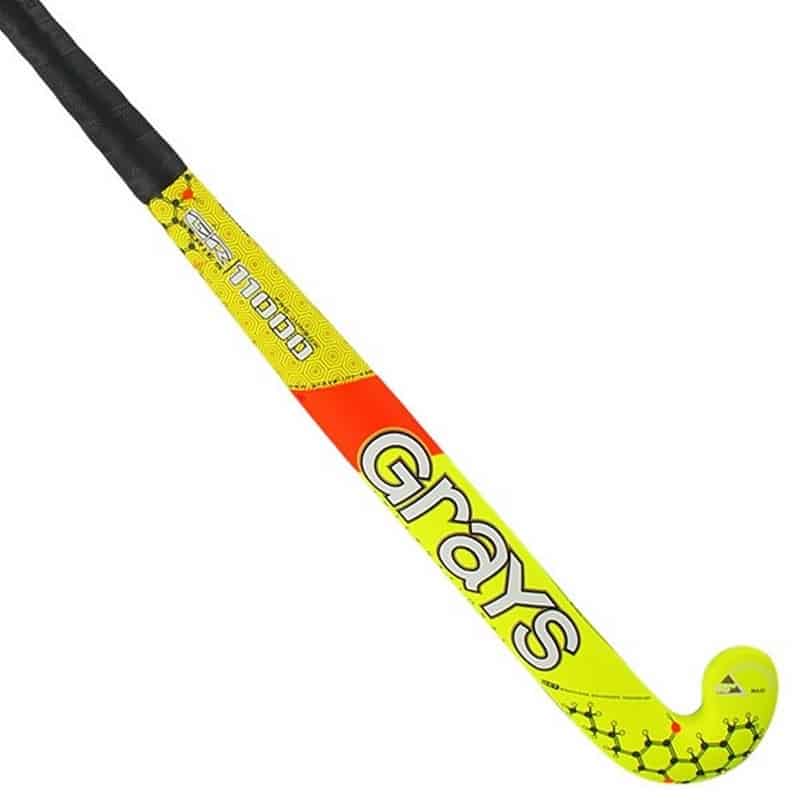
The stick I currently use is Grays GR11000
I have predominantly played with Grays throughout my playing career and although I have tried several brands I have always preferred using Grays sticks, while others swear by others brands.
As a striker I used to play with the Grays GX7000 (for about 5 seasons) and this year I decided to try the new Grays GR11000 which is the best stick I have ever played with.
It offers an incredible balance between power while also offering excellent first touch control which is quite rare.
Budget
Obviously the final factor to consider is of course your budget. There is a broad range of pricing with high carbon sticks being more expensive. It’s important to note that expensive sticks are not necessarily best for you as it depends on your level and ability.
My advice is to test out different sticks in your price range if you can before buying and make your final choice based on how it feels for you. Remember to think about the position you play and if you want more power, more control or a balance.
Want FREE Training Tips?
Receive free hockey tips and get access to exclusive training videos, plus receive the latest posts delivered right to your inbox. Just let us know where to send it below:
Get FREE Hockey Tips (Plus Access to Exclusive Training)
